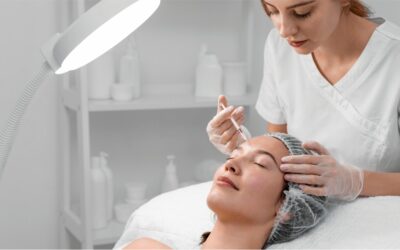What’s more frustrating than acne?- the acne scars. It really takes a lot of time to remove all acne scars after the acne infection. According to experts, people who have a tendency to develop acne and pimples should try to prevent them with double efforts. Stubborn acne marks directly affect the confidence level of individuals. They try everything possible to get rid of it but only the right treatment provides a positive result. Just to get rid of these marks, often individuals try many internet-suggested DIYs and that simply worsen the overall skin condition. Today, we are here with a complete guide on effective dermatologist-approved acne scar treatment so that you can get exactly what your skin needs.
Types of acne scars
An acne infection leaves various types of scars. Based on the type, experts can decide the treatment type and procedure. Generally, there are 3 types of scars, such as-
- Pigmentation
- Atrophic scars
- Hypertrophic or Keloid scars
Available treatment for pigmentation
Pigmentation is not the direct result of acne infection but it may take place after an acne infection. Sometimes, pigmentation fades away over time but sometimes they require proper diagnosis and treatment.
- Skin resurfacing is an effective treatment to get rid of stubborn pigmentation. It effectively exfoliates the skin and reduces unevenness. The skin resurfacing method includes microdermabrasion along with chemical peels.
- UV protection is very much required in order to reduce acne scars, pigmentation, and skin unevenness. The skin lightening process works best when you include a dermatologically tested UV protection sunscreen. Apart from skin lightening, it has many other benefits such as it prevents aging signs, skin cancer, hyperpigmentation, and so on.
Available treatment for Atrophic scars
This is a very common form. These scars take place when an individual is suffering from acne inflammation for a prolonged span of time. These scars can be categorized into 3 types such as icepick, box scars, and rolling.
- Fillers are effective in treating Atrophic scars. Substances like hyaluronic acid, collagen, and nano fat are used in the form of injections directly into the skin to fill the gaps caused by these scars.
- Resurfacing is another effective treatment option. It concentrates on removing the top layer of the skin. It lightens the scar and lets the body produce new skin. It basically performs exfoliation on hyperdrive.
- Collagen induction is the next thing on the treatment list. This is a truly unique procedure that creates fake injury in the skin to trick the body so that it produces more collagen. The more collagen re-heals the skin and we get an even skin texture.
- Light therapy or photo rejuvenation is low-level laser therapy. It combats a wide range of skin problems including acne, acne scar, fine lines, and hyperpigmentation.
Available treatment for Hypertrophic or Keloid scars
Hypertrophic or Keloid scars occur due to the overproduction of collagen. It’s basically a result of overacting the healing response.
- Corticosteroid injections help in breaking down the excessive collagen and reduce inflammation. It helps in getting smoother skin and heals the scar permanently.
- Cryosurgery is the process of removing scars surgically. Sometimes, doctors freeze the scar tissue and it falls off automatically.
- Resurfacing is also effective in treating hypertrophic scars. It removes the top layer of the skin and results in a smoother and more even skin texture.
These are possible and leading acne scar treatments that one can avail easily. But before choosing any acne scar treatment, it’s important to consult with the best skin clinic like ‘The Skin Zeal’ or dermatologists Applying any DIY can be harmful and may leave long-term effects. When it’s about your skin, be gentle with it. Visit Here.



